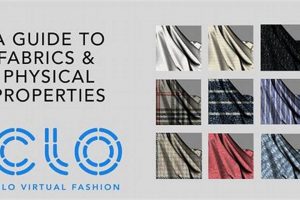An assembly of tools and materials designed for individuals to create stenciled images on various surfaces, typically fabric or paper, is often marketed as a user-friendly package. This collection usually includes a mesh screen stretched over a frame, a squeegee, stencil material, ink, and instructions guiding the user through the screen printing process. These packages enable the execution of screen printing techniques at home or in small-scale studio environments.
The accessibility offered by these sets fosters creativity and allows for personalized designs on apparel, posters, and other items. This approach democratizes the screen printing process, moving it from professional workshops to individual users. Historically, screen printing has been a significant method for mass production, but these readily available options bring this technique to hobbyists and small businesses, enabling custom production runs without significant capital investment.
The following sections will detail the components found within these sets, outline the standard procedure for their utilization, and explore factors to consider when selecting the most appropriate option for specific project requirements.
Tips for Using a DIY Silk Screen Kit
Optimizing the effectiveness of a screen printing package requires careful attention to detail and adherence to best practices. These guidelines aim to maximize the quality and longevity of printed results.
Tip 1: Mesh Tension is Key. The tightness of the mesh screen directly impacts the quality of the print. Ensure the mesh is uniformly taut before creating the stencil. Loose mesh can lead to blurry or distorted images.
Tip 2: Proper Ink Selection. Choosing the correct ink for the target material is crucial. Fabric inks are specifically formulated to bond with fibers, while paper inks are designed for absorbency. Using the wrong ink can result in fading, cracking, or poor adhesion.
Tip 3: Stencil Application. Precise stencil application is essential for crisp lines. Clean the screen thoroughly before applying the stencil material to ensure proper adhesion. Air bubbles or imperfections can compromise the stencil’s integrity.
Tip 4: Squeegee Angle and Pressure. Maintaining a consistent squeegee angle and pressure is vital for even ink distribution. A 45-degree angle is generally recommended, with moderate pressure applied in a smooth, continuous motion. Inconsistent pressure can lead to uneven ink coverage.
Tip 5: Curing is Critical. Proper curing of the ink is necessary to set the design permanently. Follow the ink manufacturer’s instructions for heat setting, which typically involves using a heat press or iron. Insufficient curing can result in the ink washing out or fading over time.
Tip 6: Thorough Cleaning. Immediately after use, clean the screen and squeegee thoroughly to prevent ink from drying and clogging the mesh. Use appropriate solvents recommended by the ink manufacturer. Failure to clean promptly can render the equipment unusable.
The successful implementation of these recommendations will contribute significantly to the production of high-quality, durable screen prints. Adherence to these practices maximizes the potential of the device.
The next section will cover troubleshooting common issues encountered while using the set.
1. Mesh Count
Mesh count, a critical specification within a screen printing frame included in a ‘do it yourself’ silk screen package, denotes the number of threads per inch (TPI) in the screen fabric. This measurement directly influences the resolution and detail achievable in the printed image. A higher mesh count signifies a finer mesh, allowing for the reproduction of intricate designs and halftones with greater precision. Conversely, a lower mesh count features a coarser mesh, suitable for bold graphics with solid areas where fine detail is not paramount. The selection of an appropriate mesh count is paramount for the success of any screen printing project initiated with a ‘do it yourself’ set; an incorrect choice can result in poor image quality or difficulties in ink flow.
For instance, consider printing a photograph onto fabric using the aforementioned package. A lower mesh count, such as 86 TPI, would likely result in a blurred, pixelated image lacking detail due to the larger openings in the mesh allowing excessive ink to pass through. Conversely, a higher mesh count, perhaps 305 TPI, would enable a much sharper, more detailed reproduction of the photograph, capturing subtle gradients and fine lines. However, the finer mesh might also require thinner inks to flow freely, potentially necessitating specialized ink formulations not always included in standard ‘do it yourself’ sets. Therefore, understanding the relationship between mesh count, ink viscosity, and design complexity is essential for optimal results. A common practical consideration is to start with a mesh count around 110-156 TPI for general purpose printing and then move up or down from there depending on the project requirements. The set itself might include a specific mesh count, which limits its capabilities to certain kinds of jobs or designs.
In summary, mesh count is an integral factor determining the quality and suitability of a ‘do it yourself’ silk screen print. The selection of an appropriate mesh count, contingent upon design complexity and ink characteristics, directly impacts the fidelity of the final image. While ‘do it yourself’ kits offer accessibility, a clear understanding of mesh count and its implications is crucial to overcoming potential limitations and achieving professional-looking results. The limitations imposed by a fixed mesh count in a pre-packaged set can be mitigated by selecting a package tailored to the intended printing applications, or, more expensively, using a system which allows mesh replacement.
2. Ink Type
The selection of ink constitutes a pivotal decision when utilizing a self-assembly screen printing apparatus. The type of ink employed directly influences the adhesion, durability, and visual fidelity of the printed image. Incorrect ink selection can result in substandard results, including image degradation, poor wash resistance in fabric applications, and inadequate bonding to the substrate. The composition of the target material, whether fabric, paper, plastic, or other media, dictates the appropriate ink formulation. For example, textile inks designed for use on fabrics are formulated with binders that create a strong bond to the fibers, allowing the print to withstand repeated washing cycles. Conversely, inks intended for paper may lack the necessary binding agents for durable adhesion on textiles, leading to premature wear or flaking.
Consider a scenario where an individual attempts to print a design onto a cotton t-shirt using an acrylic ink designed for paper. While the initial print may appear satisfactory, the lack of proper binders in the ink would result in the des
ign cracking or fading significantly after only a few washes. Conversely, employing plastisol ink, specifically formulated for textile applications, would ensure a durable, wash-resistant print. Similar considerations apply to printing on other materials. Inks designed for plastics often contain additives that enhance adhesion to non-porous surfaces, while those formulated for metal require specialized pigments and binders to resist corrosion and abrasion. The practical significance of understanding ink compatibility is underscored by the potential for wasted materials, time, and effort resulting from incorrect ink selection. It is of utmost important to use the inks that are suitable for the types of materials that are available in the kits to prevent poor results.
In summary, the proper selection of ink is paramount for achieving optimal results with a self-assembly screen printing package. The relationship between the ink’s formulation and the target substrate’s properties must be carefully considered to ensure durable, high-quality prints. While the kits provide an accessible entry point to screen printing, neglecting the crucial aspect of ink selection can undermine the entire process. Successful implementation of a do-it-yourself screen printing project necessitates a thorough understanding of ink types and their suitability for various materials, which ensures the longevity of the design on the target substrate.
3. Stencil Material
Stencil material serves as a critical component within a ‘diy silk screen kit,’ dictating the precision and durability of the resulting print. The choice of stencil material influences the fineness of detail achievable, the ease of stencil creation, and the longevity of the stencil during the printing process. The following outlines key facets of stencil material relevant to the successful use of these kits.
- Photo Emulsion
Photo emulsion is a light-sensitive liquid applied to the screen mesh. Once dried, an image is exposed onto the emulsion using UV light, hardening the exposed areas and leaving the unexposed areas soluble for washout. This method enables highly detailed stencils with clean edges. In a ‘diy silk screen kit’ context, photo emulsion allows for intricate designs but requires a controlled environment and UV light source, potentially adding complexity to the process.
- Vinyl
Vinyl is a thin, adhesive-backed material cut into the desired stencil shape using a cutting machine or craft knife. It offers a relatively simple and direct stencil creation method, suitable for bold designs with fewer intricate details. When integrated within a ‘diy silk screen kit,’ vinyl stencils provide a quick and accessible option, particularly for users without access to photo emulsion equipment. However, vinyl may lack the durability and fine detail capability of photo emulsion.
- Paper or Cardstock
Paper or cardstock can be used as a stencil material, often temporarily adhered to the screen using spray adhesive or tape. This is the simplest and most cost-effective stencil option, suitable for basic shapes and designs with low print runs. In a ‘diy silk screen kit’, paper stencils offer a readily available material for experimentation, but they are less durable and precise than other options, limiting their use to simple projects with fewer repetitions.
- Stencil Film
Stencil film is a transparent or translucent material designed specifically for stencil creation. It can be cut by hand or with a cutting machine, offering a balance between durability and ease of use. Stencil film integrated in ‘diy silk screen kit’ offers better precision and longevity than paper stencils, while avoiding the process and investment of photo emulsion method.
In conclusion, stencil material plays a defining role in the capabilities and limitations of a ‘diy silk screen kit.’ The choice of material directly impacts the achievable detail, durability of the stencil, and overall complexity of the screen printing process. While each option presents its advantages and disadvantages, a careful consideration of project requirements will guide the selection of the most appropriate stencil material for successful implementation.
4. Squeegee Hardness
The hardness of the squeegee blade is a critical, often overlooked, variable within a “diy silk screen kit” that significantly affects ink deposition and print quality. Measured on the durometer scale, squeegee hardness influences the amount of pressure required to push ink through the screen mesh and onto the substrate. A softer squeegee blade conforms more readily to uneven surfaces, depositing a thicker layer of ink, which is advantageous for printing on textured fabrics or achieving bold, opaque colors. Conversely, a harder squeegee blade maintains a sharper angle of attack, depositing a thinner, more controlled layer of ink, which is preferable for fine detail work and halftone printing. Therefore, the selection of an appropriate squeegee hardness is not arbitrary; it is a direct determinant of the final print outcome.
Consider, for example, attempting to print a detailed photograph onto a t-shirt using a “diy silk screen kit” equipped with an overly soft squeegee (e.g., 60 durometer). The excessive ink deposition would likely result in a blurred, muddy image, lacking the subtle gradations and fine lines present in the original photograph. Conversely, using a squeegee that is too hard (e.g., 80 durometer) may not deposit enough ink, leading to a washed-out print with inadequate coverage, particularly on darker fabrics. A more appropriate squeegee hardness, perhaps around 70 durometer, would strike a balance, allowing for sufficient ink deposition while retaining a reasonable level of detail. The “diy silk screen kit” may or may not provide an adjustable squeegee, which could limit the kit’s use to only one specific type of print. The absence of such a choice is the most common factor for many users whom were unable to achieve their printing goals by buying this kit.
In summary, squeegee hardness exerts a profound influence on the final print result achieved when using a “diy silk screen kit.” The selection of an appropriate durometer is contingent upon the complexity of the design, the nature of the substrate, and the desired ink opacity. While these kits offer an accessible entry point to screen printing, the limitations imposed by a fixed squeegee hardness necessitate careful consideration of the project’s requirements. Users are encouraged to select kits that offer options in durometer, or to source alternative squeegees separately to optimize their results, if technically possible. Choosing the right squeegee will allow the user to achieve the designs they are aiming for, or potentially a failure in the process.
5. Frame Size
Frame size, a fundamental specification within a “diy silk screen kit,” directly constrains the maximum printable area and influences the overall versatility of the system. The dimensions of the frame dictate the largest image that can be transferred onto the substrate, thereby imposing practical limitations on project scope and design complexity. Understanding the implications of frame size is essential for selecting
a kit that aligns with the intended applications.
- Printable Area Limitation
The most immediate consequence of frame size is the restriction of the printable area. A smaller frame necessitates smaller designs, restricting the user’s ability to create large-format prints or intricate, expansive artwork. For example, a “diy silk screen kit” with an 8″ x 10″ frame is unsuitable for printing designs exceeding those dimensions, rendering it inadequate for projects such as printing large graphics on apparel or posters. The practical limitation also extends to multi-color prints where each color requires a separate screen; accurate registration becomes increasingly difficult with larger designs and smaller frames.
- Material Compatibility
Frame size influences the type of materials that can be effectively printed. Smaller frames are typically better suited for printing on smaller items, such as t-shirt pockets, tote bags, or paper stock. Conversely, larger frames are necessary for printing on larger garments like the front or back of a t-shirt, large posters or banners. Attempting to print on materials disproportionately sized relative to the frame introduces practical challenges in ink distribution and registration, potentially leading to inconsistent print quality or unusable results. The physical handling of larger substrates with smaller frames can also become unwieldy, impacting print consistency.
- Design Complexity and Detail
While not a direct limitation, frame size indirectly affects the achievable design complexity and level of detail. Smaller frames often necessitate simpler designs to maintain clarity and readability. Intricate designs with fine lines and small details may become challenging to execute effectively on smaller frames, as the reduced printable area can compress the design, leading to a loss of detail and visual fidelity. The available space for ink application and squeegee manipulation is also reduced, further impacting the print quality for complex designs. Larger frames, conversely, offer greater latitude for complex designs and finer details.
- Equipment Compatibility and Storage
Frame size dictates the compatibility with other essential equipment within a “diy silk screen kit,” such as drying racks, exposure units, and washout booths. Larger frames require correspondingly larger equipment, increasing the overall space requirements and potentially impacting the portability of the kit. Smaller frames, while offering limited printable area, are often more compact and easier to store, making them suitable for users with limited workspace. The overall scale of the operation is directly influenced by the frame size, affecting both the upfront investment in equipment and the ongoing operational costs.
In conclusion, frame size is a critical factor to consider when selecting a “diy silk screen kit.” The limitations imposed by the frame dimensions directly impact the printable area, material compatibility, design complexity, and equipment compatibility. While smaller frames offer compactness and ease of use, larger frames provide greater versatility and design freedom. The optimal frame size is ultimately dictated by the intended applications, underscoring the importance of aligning the kit’s specifications with the user’s specific project requirements. Careful consideration of these factors will ensure that the selected kit can effectively meet the user’s screen printing needs and deliver satisfactory results.
Frequently Asked Questions about DIY Silk Screen Kits
The following addresses common inquiries regarding the use, limitations, and considerations associated with do-it-yourself (DIY) silk screen packages. The answers are designed to provide clarity and guidance for individuals considering or currently using these kits.
Question 1: What level of experience is required to successfully use a DIY silk screen kit?
While marketed for accessibility, successful utilization requires a foundational understanding of screen printing principles. Familiarity with stencil creation, ink properties, and printing techniques is beneficial. First-time users may experience a learning curve, necessitating experimentation and patience.
Question 2: What types of designs are best suited for DIY silk screen kits?
These kits are generally most effective for designs featuring bold graphics and limited fine detail. Intricate designs with halftones or complex color separations may present challenges due to the limitations of the included equipment and materials.
Question 3: What is the expected lifespan of a stencil created using a DIY silk screen kit?
Stencil lifespan varies depending on the material used (e.g., vinyl, photo emulsion) and the number of prints produced. Vinyl stencils typically have a shorter lifespan than photo emulsion stencils, especially when subjected to repeated use and aggressive cleaning solvents. Proper care and handling can extend stencil longevity.
Question 4: What factors influence the quality of the final print when using a DIY silk screen kit?
Several factors contribute to print quality, including mesh tension, ink viscosity, squeegee angle and pressure, stencil adhesion, and curing methods. Consistent technique and careful attention to detail are essential for achieving optimal results.
Question 5: What safety precautions should be observed when using a DIY silk screen kit?
Proper ventilation is crucial, particularly when working with solvent-based inks. Skin and eye protection should be worn to prevent exposure to potentially irritating chemicals. Follow all manufacturer’s instructions for ink handling and disposal.
Question 6: Can DIY silk screen kits be used for commercial purposes?
While these kits facilitate small-scale production, their limitations may not be suitable for high-volume commercial applications. Factors such as stencil durability, printing speed, and consistency may restrict their viability for larger print runs.
In summary, DIY silk screen kits offer an accessible entry point to screen printing, but they are not without limitations. Successful utilization requires a foundational understanding of the process, careful attention to detail, and adherence to safety precautions.
The subsequent section will explore common troubleshooting tips for addressing challenges encountered during the screen printing process.
Conclusion
The preceding examination of the “diy silk screen kit” reveals both its potential as an accessible entry point to screen printing and its inherent limitations. Factors such as frame size, mesh count, ink type, stencil material, and squeegee hardness collectively determine the quality and scope of achievable results. Success hinges upon a clear understanding of these variables and their interdependencies. Inexperienced users must be prepared for a learning curve, while experienced practitioners should recognize the kit’s constraints relative to professional-grade equipment.
The proliferation of “diy silk screen kit” options underscores a growing demand for personalized fabrication tools. However, buyers must critically assess their individual needs and project requirements to ensure the selected kit aligns with their intended applications. Informed decision-making, coupled with diligent practice, will maximize the likelihood of successful outcomes and mitigate the risk of unmet expectations. The accessibility of these systems doesn’t negate the need for responsible and informed utilization.







